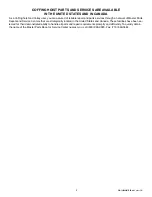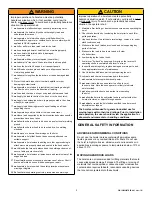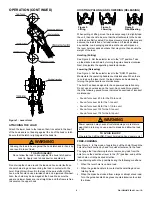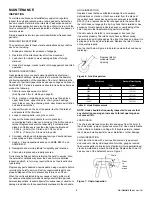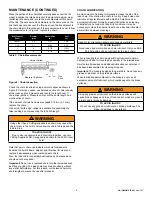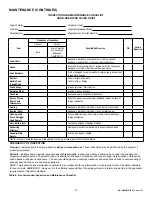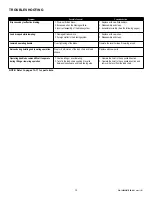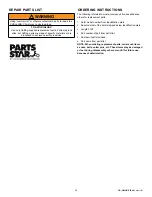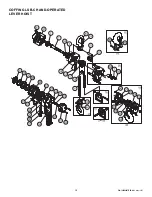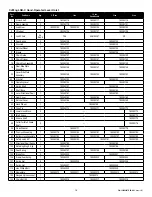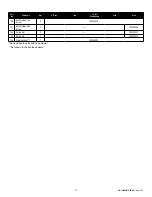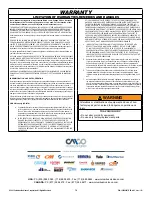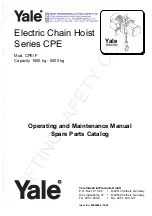
9
P/N: 192090087 REV. AA
October 2021
MAINTENANCE (CONTINUED)
Slack the portion of the chain that normally passes over the lift-
wheel. Examine the interlink area for the point of maximum wear
(polishing). Measure and record the stock diameter at this point
of the link. Then measure stock diameter in the same area on the
link that does not pass over the lift-wheel (use the link adjacent to
the chain stop for this purpose). If the measurements do not follow
the measurements in Figure 8, replace the chain.
Hoist Capacity
(Tons)
Diameter
(mm)
Standard Size
(in.)
Limit
(in.)
3/4 and 1
5.6
6.732
6.866
1-1/2
7.1
8.346
8.511
3
9
10.709
10.923
6
9
10.709
10.923
Table 3: Chain Measurements
Vernier Caliper
One
Pitch
Measure 10 pitches
Figure 8: Chain Inspection
Check the chain for stretch using a vernier caliper as shown in
Figure 8. Select an unused, unstretched section of chain (usually
at the loose end) and measure and record the length over 11
chain links (pitches). Measure and record the same length on a
worn section of chain.
If the amount of stretch and wear exceeds 0.145 in. (3.7 mm),
replace the chain.
Use only a “knife-edge” caliper to eliminate the possibility of a
false reading by not measuring the full pitch length.
!
WARNING
Using other than a Coffing-supplied load chain may cause the
chain to jam in the hoist and/or allow the chain to break and the
load to drop.
TO AVOID INJURY
Due to size requirements and physical properties, use only
Coffing Supplied LSB-C supplied load chain in the LSB-C lever
hoist.
Note that a worn chain can indicate worn hoist components.
Examine the hoist’s frame, stripper, and lift-wheel for wear and
replace it as necessary when replacing worn chain.
Also, the load chain is specially heat treated and hardened and
should never be repaired.
Important:
Do not use a replaced chain for other purposes such
as lifting or pulling. The load chain may break suddenly without
any visual deformation. For this reason, cut replaced chain into
short lengths to prevent its use after disposal.
CHAIN LUBRICATION
A small amount of lubricant will greatly increase the life of the
load chain. Do not allow the chain to run dry. Keep it clean and
lubricate at regular intervals with SAE 20-30 machine oil or
equivalent lubricant. Normally, weekly lubrication and cleaning
is satisfactory, but under hot and dirty conditions, it may be
necessary to clean the chain at least once a day and lubricate it
several times between cleanings.
!
WARNING
Used motor oils contain known carcinogenic materials.
TO AVOID INJURY:
Never use used motor oils as a chain lubricant. Only use SAE
20-30 machine oil as a lubricant for the load chain.
When lubricating the chain, apply sufficient lubricant to obtain
natural run-off and full coverage, especially in the interlink area.
Hoist normally requires no additional lubrication except when it
has been disassembled for cleaning or repairs.
Important:
The brake is designed to operate dry. Do not use any
grease or lubricant on the braking surfaces.
When lubricating parts adjacent to the brake, do not use an
excessive amount of lubricant, which could seep onto the brake
surfaces.
!
WARNING
Using any grease or lubricant on the braking surfaces will
cause brake slippage and loss of load control, which may result
in injury and/or property damage.
TO AVOID INJURY:
Do not use any grease or lubricant on braking surfaces. The
brake is designed to operate dry.


